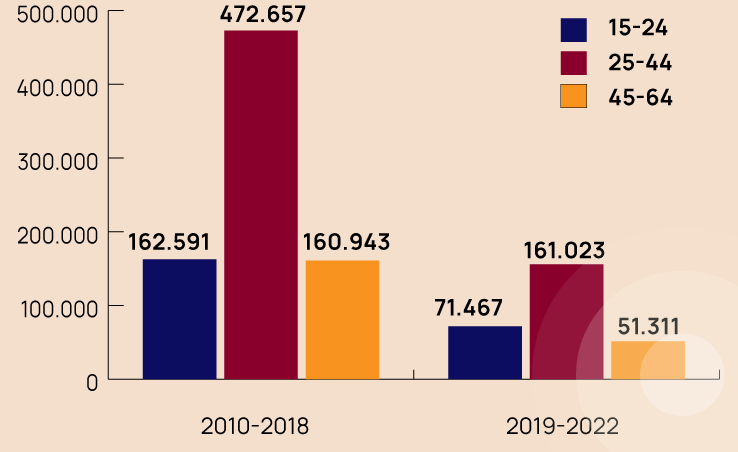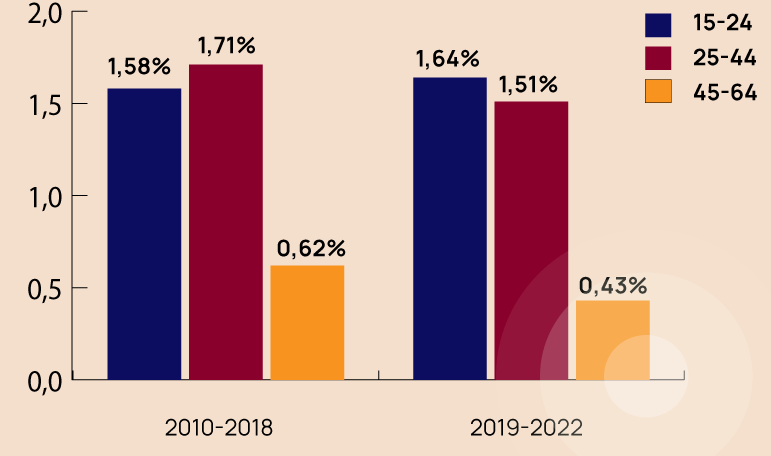A recent study by the ENA Institute discovered that Greece continues to face a significant “brain drain” problem even after its exit from the bail-out programs in 2018 and its subsequent economic recovery.
“Brain drain” refers to the emigration of educated and skilled individuals from one country to another in search of better job opportunities. This phenomenon is particularly detrimental as it deprives the home country of essential human capital and undermines its productive potential. The term gained prominence in Greece during the bailout years, when rising unemployment and decreasing income drove many to seek economic opportunities abroad.
According to the study, between 2010 and 2022, a total of 1,079,992 working-age people left the country. Of these, 796,191 people left during the bail-out years (2010-2018), while 283,801 left post-bail-out (2019-2022).
In both time periods, almost 60% of those who emigrated belonged to the 25-44 age cohort, which is the most productive group,
Total number of emigrations from Greece by age group
Calculating the average annual migration rate during each time period, taking into consideration population change, gives the clearest picture of the difference between the two.
The average annual migration rate for the 15-24 age group increased from 1.58% during 2010-2018 to 1.64% during 2019-2022. This increase may not be great cause for alarm as people belonging to this group might be leaving to study abroad with a prospect of coming back to Greece.
For the 25-44 age group, the rate decreased from 1.71% to 1.51%, and for the 45-64 age group, it decreased from 0.62% to 0.43%.
Despite a slight decrease in emigration for those aged 25-44 and 45-64, the percentage is still very high compared before the bailout period (2008-2009) where the respective rates were 0.68%, and 0.2%.
Average Annual Emigration Rate by Age Group





